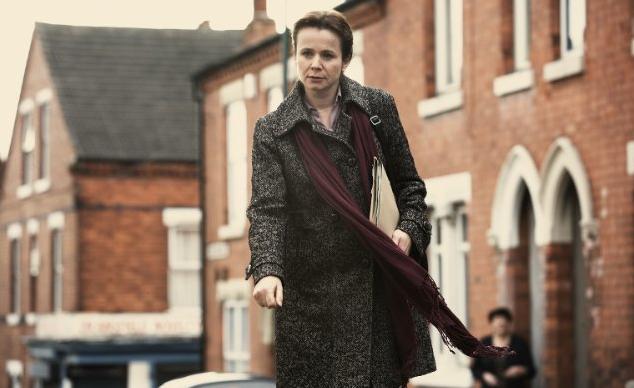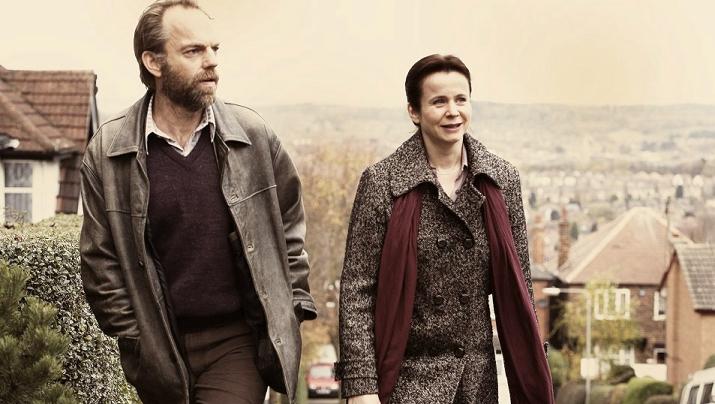Possibly the largest recent social scandal to rock Australian and British was the “Child Migrant Scheme”, where thousands of poor and orphaned children were shipped unaccompanied from Britain to Australia, where they were promised a land of “oranges and sunshine” but instead received systematic abuse from secular and religious institutions.
Hence the title of the Australian/British co-production Oranges and Sunshine, which tells the story of social worker Margaret Humphries (Emily Watson) who uncovered the Child Migrant scheme, and helped thousands of misplaced individuals find their identity.
Directing the film in his feature film debut is Jim Loach, son of acclaimed filmmaker and activist Ken Loach, who is making a name for himself with this stirring, confronting, and rewarding story of hope is the face of injustice, and one woman’s fight to make it all possible.
Jim spoke to Matt’s Movie Reviews about the making of Oranges and Sunshine, and the themes which the film covers.
Enjoy!
Do you remember the first time you heard about the Child Migrant scandal?
I was in London and someone passed me Margaret’s book. I read it on the tube on the way home, and stayed up all night reading it, and the following day I went back into work and found the number for Margaret and gave her a ring.
We had a very short phone conversation, and I’m not sure what she quite made of me, but I got her to agree to let me see her, and went up to Nottingham where her office was above a sandwich shop. She made me a cup of tea and we just sat down, and she started to tell me her story and I was completely compelled and thought it was completely extraordinary. I found her a kind of really inspiration person, and the more she talked the more I knew the film I wanted to make.
Initially, your idea was to film a documentary based on these events. How did that evolve into a feature film?
Well, that is one of those things that got said at one point, but I don’t really remember it ever being a documentary as such. I knew what kind of film I had in mind, so I think where that came from was at the time I made a few documentaries in Britain and there was a connection there. But I had always wanted to make it a feature film.
Casting real life characters can be tricky. What were they ground rules set before meeting actors?
Well we were definitely after authenticity and believability. I wasn’t after anyone who would do an impression. We came to Emily (Watson) because obviously I had known and admired her since I saw Breaking the Waves. We had a sort of fantasy cast list in my diary, which I typed off and sent to Rona (Munro) who was working on the script. When she was typing away at the computer she saw my fantasy cast list and fell about laughing!
But Emily was top of the list, because we knew we would start at Margaret’s tower block in Nottingham, in the North of England, and it would probably be pissing with rain, frankly. So we wanted an actor who looked like she would really be believable in that situation. An epic, major actor, but one still believable in that situation, and that’s quite a challenge.
Emily has got a grasp at the heart of her character Margaret, which was what we hoped Emily would bring to the part. She is quiet a strong woman. Very strong, in fact. Very determined. But at the same time she was cautious, compassionate and vulnerable. There was this very beautiful fragility about Emily that I had always loved. So there was that combination that made this role right for Emily.
 |
| "Emily is quiet a strong woman. But at the same time she was cautious, compassionate and vulnerable. There was this very beautiful fragility about Emily that I had always loved." - Jim Loach |
The film was shot in both England and Australia. How do you prepare yourself logistically for that kind of location shoot?
With a lot of difficulty! (laughs) I hadn’t realised how challenging it would be, to be honest. There was a lot of flying backward and forwards. Obviously there was pressure is to do it all in England, or all in Australia, or at least the majority in one or the other. But we were really determined to represent the English scenes in England, and the Australian scenes in Australia, because that it at the heart of the story.
So we did about 15 days in Nottingham, a couple of days in London, and then we moved everybody over to Adelaide and carried on shooting for 3 weeks, and then moved out to the Flinders Ranges, and finished up there. We were like a travelling roadshow, and it was like an endurance test.
Well it turned out really well on screen.
Thank you.
In the film, Margaret and Len visit the Christian Brothers at Bindoon (Western Australia) in a tense scene. What was your experience of Bindoon when you filmed there?
Well, unfortunately we couldn’t shoot at the real Bindoon. We would have loved to, and we did ask, but we got a load of excuses and never really got a proper answer. But it was clearly a “no”.
So what we had to do was recreate it, through a combination of different locations. I think about 10 different sequences with 5 different locations, and then some CGI. But what we were kind of reiterating was that the interior was pretty faithful and also trying to keep the spirit of the building, that this monolithic place was completely unusable for kids. That was the essence of the real place which we tried to keep in the fictional place in the film.
We were shown around Bindoon, actually, by a few people who had been housed as children, and it was an incredible afternoon. Truly memorable. I will never forget it. One of them broke down half way through the afternoon, banging the wall with his hands and saying, “My blood is in these stones!”
They were extraordinary, and really specific as well about exactly which bits they had help build, because when we went there I was first quite sceptical, to be honest. Because you just think, “How could kids have built such a huge building?” But they were incredibly specific that they were clearly labourers.
There was a lot of ground to cover. Can you foresee yourself investing in additional projects based on these events, such as a documentary?
Hmmm...there is a brilliant documentary to be made, absolutely. And I would have loved to do it at the same time of making the film, but unfortunately I just didn’t have time to do it.
But the real people involved, a lot of them that we met who contributed to the characters and script, are extraordinarily brilliant, and someone should definitely make a documentary that would be fantastic, and the people would come across pretty well. They’ve got incredibly cinematic faces and ways of talking, and a huge amount of real, personal stories. So someone should definitely make it.
 |
| "For us the heart of the film is about identity... all of these people are on a personal journey of discovery to find out who they are, and they find a way of recovering." - Jim Loach |
When shooting the film, both the Australian and British governments apologised. What impact did that have on the set?
It had a really big impact, actually. I think it was pretty surreal, because we were at the point of shooting near the end where some of the scenes are quiet intimate, and there was this sort of sense of a world event happening outside the set, which was quite disconcerting in a way, because we are just trying to find a sort of truthful moment and you got all of this stuff going on outside.
So it was quiet odd for all of us, especially the actors, I think. But I think it completely underlined the precious story they happened to have, and they took that very seriously. I was incredible lucky to have David (Wenham), and Emily, and Hugo (Weaving). Three complete stars, and I love all three of them. They were absolutely fantastic and responded to the reality of this story.
As an Australian and a Catholic, the story hit me twice as hard. What would you say to those like me who are reeling from this information? Would you ask us to look further into this story?
I would, yeah. I just feel that the truth, in the end, has to come out to be discussed and talked about. That way people can move on.
For us the heart of the film is about identity, and it’s about what makes us who we are. That’s the emotional heart of the film, because what fascinated us was all of these people are on a personal journey of discovery to find out who they are, and they find a way of recovering. For us that was a very inspirational part of the story.
|
